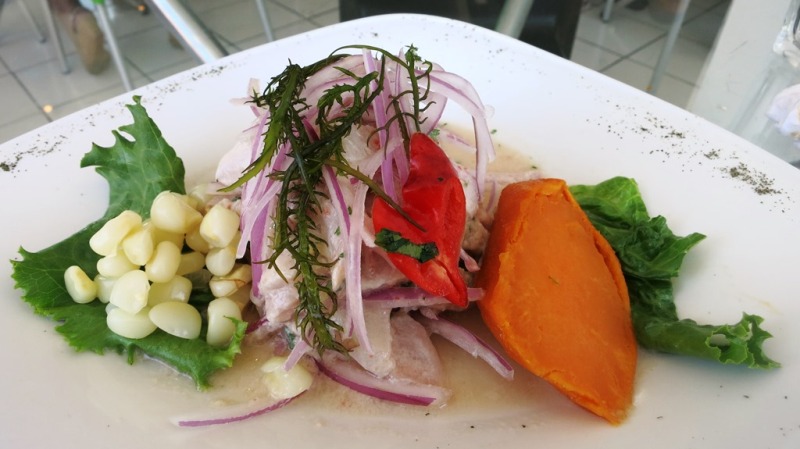
Ceviche is a catch-all term for different variants of cold seafood dishes across Latin America. But Peru’s version of ceviche, pictured above, is the category’s champion.
Peru’s signature dish is raw fish marinated in lime juice, which kills the bacteria. The fish is served with sweet potato, red onion, white corn, seaweed and spicy pepper (either “rocoto” or “aji limo”). The lime is sour, the sweet potato is sweet, the pepper brings the spice and all three combine for a Holy Trinity of flavor.
Ceviche is a healthy plate to boot. Raw fish is loaded with Omega-3 fatty acids and protein. Lime juice adds your recommended daily intake of Vitamin C. Sweet potatoes are so low on the glycemic index they’re almost not a starch. Corn and onion pack a little fiber, and seaweed is one of the most vitamin-dense foods on the planet.
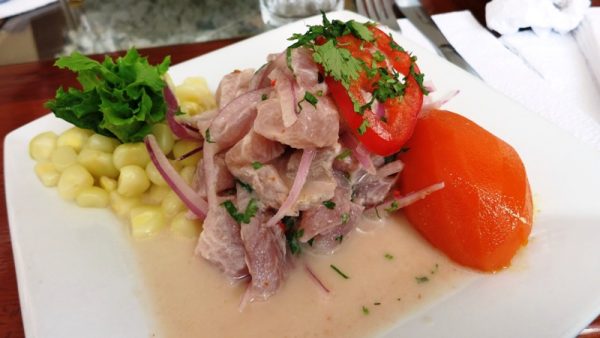
One quirk the nutrition-conscious may want to be aware of with ceviche is “glaceado” sweet potato, in which the sweet potato is drizzled in simple syrup to make it sweeter. It’s too sweet for some, including me, and the sugar whack offsets all the nutritional benefit you used to justify eating out. Note how shiny the sweet potato is in the ceviche above.
Ceviche is often served with beer. “Cevicheria” is a ceviche restaurant, but in parts of Lima it’s almost synonymous with “bar,” so you’re likely to try your ceviche in the middle of a daytime drinking scene.
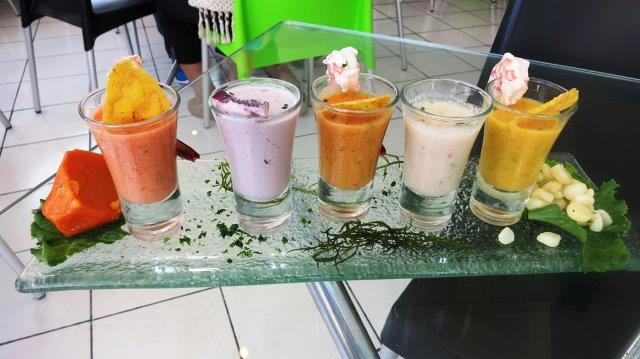
The “leche de tigre” (tiger’s milk) is the fishy lime juice at the bottom of the bowl. Cevicherias offer a shot glass of it a la carte. I like to mix it with beer.
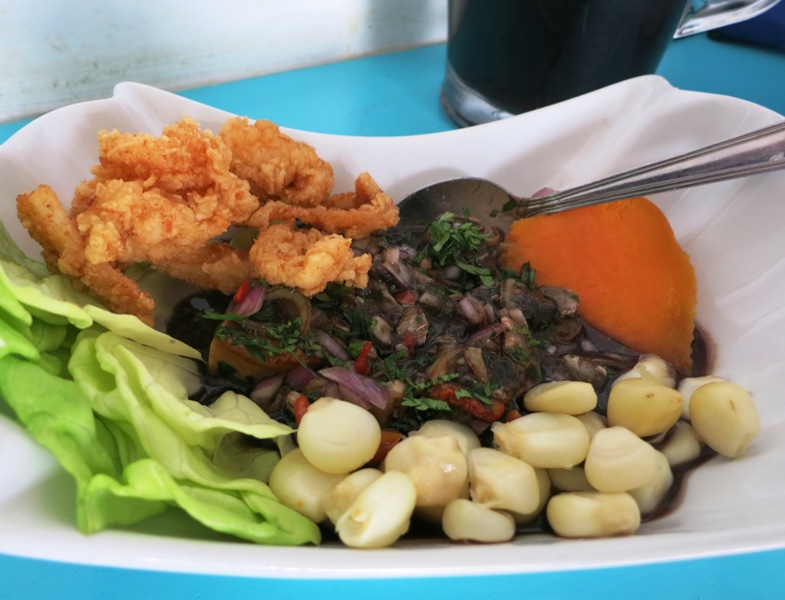
If you don’t want raw fish, “ceviche de mariscos” is shellfish ceviche. The shellfish is fully cooked before being marinated in lime juice. If you’re willing to eat just a little raw fish but not an entire plate, “ceviche mixto” has both cooked shellfish and raw fish. Above is “ceviche de conchas negras,” or black clam ceviche.
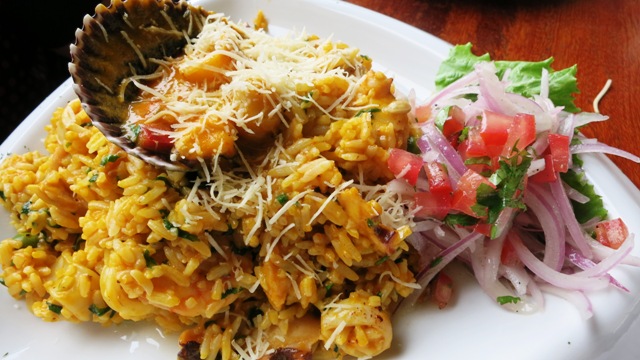
Ceviche restaurants would be called “seafood restaurants” in English, since most serve a selection of cooked-fish dishes. Arroz con Mariscos (seafood with rice, pictured above) and Picante de Mariscos (a spicier version) are mainstays, along with “Chicharron” (fried fish), soups, stews and more. So you don’t have to eat raw fish at the cevicherias.
Where to eat Ceviche
One of Lima’s most famous cevicherias is Pescados Capitales, which has locations in Miraflores and San Borja. There are high-end cevicherias in every neighborhood of the city, but an emerging trend in Lima’s restaurant scene is the “hueco,” or “hole.” These smaller restaurants serve a limited ceviche menu, usually limited to a chalkboard, with bar seating and an open kitchen. The focus is delivering top-notch ceviche at a lower price. Jose y Juanita is one popular hueco located in Lince.
I don’t recommend eating ceviche from food carts on the street. You’ll probably be OK, but why risk your digestive health on the sanitation and refrigeration practices of a guy with a cart?
Recipes
See recipes for Ceviche on Peru Delights (English) or Yanuq (Spanish).
See the Lima Food Porn photo album on the Lima City of Kings Facebook page.
4 comments